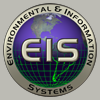
|
Troy Tanner Principal Software Engineer troyt@apl.uw.edu Phone 206-685-2770 |
Research Interests
Interface Engineering, User-Centered Design, Web Application Development, 3D Visualization & Animation
Biosketch
Troy specializes in interface engineering, user-centered design, web applications, and digital graphics. Recent projects include the NANOOS Portal and Visualization System, Boater Information System (BIS) Portal, and the Dylan Diatom educational animation.
Troy has been with the Laboratory since 1993. He joined the professional staff in 1997.
Education
B.A. Graphic Design, Architecture, Engineering, University of Washington - Seattle , 1997
Projects
|
NVS: NANOOS Visualization System The NANOOS Visualization System (NVS) is your tool for easy access to data. NVS gathers data across a wide range of assets such as buoys, shore stations, and coastal land-based stations. Never before available downloads and visualizations are provided in a consistent format. You can access plots and data for almost all in-situ assets for the previous 30-day period. |
2 Nov 2009
|
|
BIS: Boater Information System The Applied Physics Laboratory at the University of Washington developed a prototype Boater Information System (BIS) to help boaters access the best weather and oceanographic information for Puget Sound waterways. BIS gives sailors, power boaters, kayakers, fishermen, windsurfers, and kite boarders their own web portal tailored to their selected information needs. |
1 Jan 2007
|
|
NANOOS: Northwest Association of Networked Ocean Observing Systems This Pacific Northwest regional association is a partnership of information producers and users allied to manage coastal ocean observing systems for the benefit of stakeholders and the public. NANOOS is creating customized information and tools for Washington, Oregon, and Northern California. |
1 Jan 2004
|
Videos
|
The Important Little Life of Dylan Diatom A 3D animation, "The Important Little Life of Dylan Diatom," shows the plight of a diatom in the Arctic Ocean. This slice of Dylan's life, sponsored by the National Science Foundation and animated by student Anna Czoski, shows middle school students the role of phytoplankton in the Arctic. |
1 Jun 2009
|
|
Publications |
2000-present and while at APL-UW |
Natural hazards reconnaissance with the NHERI RAPID facility Berman, J.W., and 12 others including T. Tanner, "Natural hazards reconnaissance with the NHERI RAPID facility," Front. Built Environ., 6, doi:10.3389/fbuil.2020.573067, 2020. |
More Info |
11 Nov 2020 |
|||||||
|
In 2016, the National Science Foundation (NSF) funded a multi-institution interdisciplinary team to develop and operate the Natural Hazards Reconnaissance Facility (known as the "RAPID") as part of the Natural Hazards Engineering Research Infrastructure (NHERI) program. During the following 2 years, the RAPID facility developed its instrumentation portfolio and operational plan with input from the natural hazards community, the facility's leadership team, and an external steering committee. In September 2018, the RAPID began field operations, which continue today and include instrumentation, software, training, and support services to conduct reconnaissance research before, during, and after natural hazard and disaster events. Over the past 2 years, the RAPID has supported the data collection efforts for over 60 projects worldwide. Projects have spanned a wide range of disciplines and hazards and have also included data collection at large-scale experimental facilities in the United States and abroad. These projects have produced an unprecedented amount of high-quality field data archived on the DesignSafe cyberinfrastructure platform. This paper describes the RAPID facility's development, instrumentation portfolio (including the mobile application RApp), services and capabilities, and training activities. Additionally, overviews of three recent RAPID-supported projects are presented, including descriptions of field data collection workflows, details of the resulting data sets, and the impact of these project deployments on the natural hazard fields. |
|||||||||
Research Needs, Challenges, and Strategic Approaches for Natural Hazards and Disaster Reconnaissance Wartman, J., and 12 others including T. Tanner, "Research Needs, Challenges, and Strategic Approaches for Natural Hazards and Disaster Reconnaissance," Front. Built Environ., 6, 573068, doi:10.3389/fbuil.2020.573068, 2020. |
More Info |
10 Nov 2020 |
|||||||
|
Natural hazards and disaster reconnaissance investigations have provided many lessons for the research and practice communities and have greatly improved our scientific understanding of extreme events. Yet, many challenges remain for these communities, including improving our ability to model hazards, make decisions in the face of uncertainty, enhance community resilience, and mitigate risk. State-of-the-art instrumentation and mobile data collection applications have significantly advanced the ability of field investigation teams to capture quickly perishable data in post-disaster settings. The NHERI RAPID Facility convened a community workshop of experts in the professional, government, and academic sectors to determine reconnaissance data needs and opportunities, and to identify the broader challenges facing the reconnaissance community that hinder data collection and use. Participants highlighted that field teams face many practical and operational challenges before and during reconnaissance investigations, including logistics concerns, safety issues, emotional trauma, and after-returning, issues with data processing and analysis. Field teams have executed many effective missions. Among the factors contributing to successful reconnaissance are having local contacts, effective teamwork, and pre-event training. Continued progress in natural hazard reconnaissance requires adaptation of new, strategic approaches that acquire and integrate data over a range of temporal, spatial, and social scales across disciplines. |
|||||||||
The NANOOS Visualization System (NVS): A decade of development and progress addressing stakeholder needs Risien, C. M., T. Tanner, E. Mayorga, J. C. Allan, J. A. Newton, M. Kosro, R. Wold, and C. Seaton, "The NANOOS Visualization System (NVS): A decade of development and progress addressing stakeholder needs," OCEANS 2019 MTS/IEEE SEATTLE, Seattle, WA (2019). |
1 Oct 2019 |
In The News
|
Find info, tools and maps for outdoor rec and fishing in the PNW on the NANOOS website Fox News 12 (KPTV Oregon) In the wake of the massive 8.8 magnitude earthquake that set off tsunami warnings across the Pacific, Troy Tanner and Jan Newton joined Fox 12's Greg Nibler to share information about the NVS Tsunami Evacuation app. |
31 Jul 2025
|






